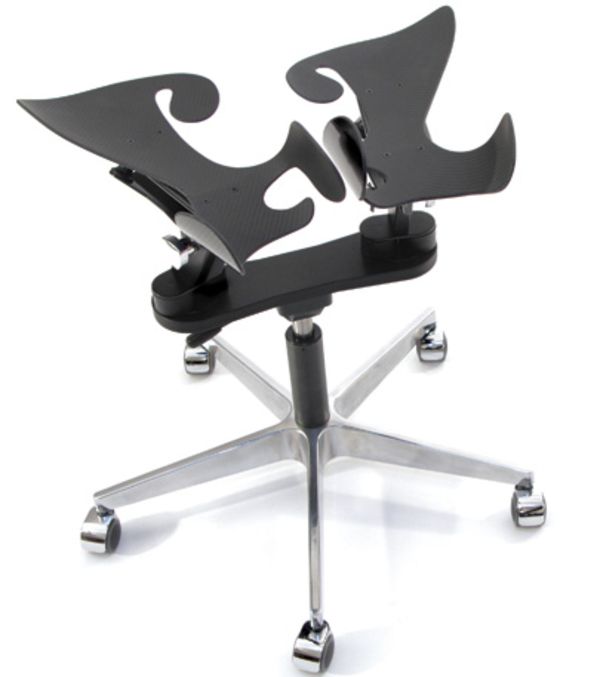 Dr. Patrik Künzler, a medical doctor from the University of Zürich, conducted post doctoral research on the limbic system in the lab of Nobel laureate Dr. Susumu Tonegawa at MIT. His focus was how emotional states influence memory-, thought-, and decision making processes in the brain. At the MIT Media Lab Patrik focused his research on how our body can be used to affect emotional states and mental performance through the limbic system in everyday devices, and how the body can be used as an input device in the most natural ways possible. Back in Switzerland, he founded Limbic Life in order to produce and market products developed with this new, neuroscience based approach. The first product of Limbic Life is the Limbic Chair, a sitting device that allows for natural, almost weightless movement of the body in a free flow state. It conveys bodily inputs to communicate with electronic devices based on the same neurological principles that we use in real life and thus allows for hands-free, low nauseation navigation in VR.
Dr. Patrik Künzler, a medical doctor from the University of Zürich, conducted post doctoral research on the limbic system in the lab of Nobel laureate Dr. Susumu Tonegawa at MIT. His focus was how emotional states influence memory-, thought-, and decision making processes in the brain. At the MIT Media Lab Patrik focused his research on how our body can be used to affect emotional states and mental performance through the limbic system in everyday devices, and how the body can be used as an input device in the most natural ways possible. Back in Switzerland, he founded Limbic Life in order to produce and market products developed with this new, neuroscience based approach. The first product of Limbic Life is the Limbic Chair, a sitting device that allows for natural, almost weightless movement of the body in a free flow state. It conveys bodily inputs to communicate with electronic devices based on the same neurological principles that we use in real life and thus allows for hands-free, low nauseation navigation in VR.
Company description:
Limbic Life was founded by Dr. Patrik Künzler, a medical doctor and neuroscientist who started to create neuroscience based input devices at MIT. Limbic Life’s first product is the Limbic Chair, a chair-like, compact input device that allows for intuitive, hands-free and low nauseation navigation in VR. It is based on neurological principles.
Limbic Life also researches and provides on screen interaction solutions for VR.
Video:
Navigation and Nauseation in VR: The Elephants in the Room – A Neuroscience Based Approach
Description:
Below your hips you walk – above your hips, you work:
In order to be successful in the long term VR needs to give us the same freedom of movement and ease of use that we have in real life, in a comfortable, easy to use, office desk compatible package. Nauseation and motion induced discomfort needs to be minimal or absent. We are proposing a neuroscience based approach to tackle these issues.
Navigation remains one of the big issues in VR today. If we want to feel comfortable in VR and effectively use the possibilities it is giving us, we need to be able to walk or “fly” where we want to, use our hand freely and independently of navigation, and direct our gaze in any direction we may chose.
The most prevalent systems for navigation in VR today are hand based input controllers like joysticks or point- and move devices, which facilitate nauseation, overload the prefrontal cortex, and most of all, bind our hands to navigation functions, at least while giving navigation inputs. Gaze-direction based navigation controls are also widespread, binding our gaze to navigation functions, thus limiting the use of our sight. Other navigation systems are large, treadmill- or cage-like objects, which require a relatively large amount of space, special equipment, and don’t give us the freedom to navigate up and down, or to fly. Finally we have devices that quite literally emulate flying in an intuitive and emotionally pleasant way, but they are large and impractical and exclude doing other activities while “flying” through VR.
Neurologically, our peripheral vision is connected to our spine and our motion-/ locomotion systems, while our focus point is connected to our hands. This separation of systems enables us to walk across a city, look at shop windows while walking past them, road signs, and other points of interest independently of where we are going. It also allows us to perform some modern day tasks, like walking through a busy square while typing on our smart phones. This is exactly the functionality we want to have in VR: Free, 3D navigation with full freedom of gaze and of the use of our hands.
Exploiting these neurological principles, we have constructed a novel, compact, chair-like device that enables intuitive, 3D navigation in VR while sitting at a desk, independently of hand controls and gaze. It uses thigh- and pelvic movement for navigation, just like in real life. Because the spine is also involved in motion generation, nauseation is lower than with other control devices.
We call it the Limbic Chair: Below your hips you walk – above your hips, you work.




